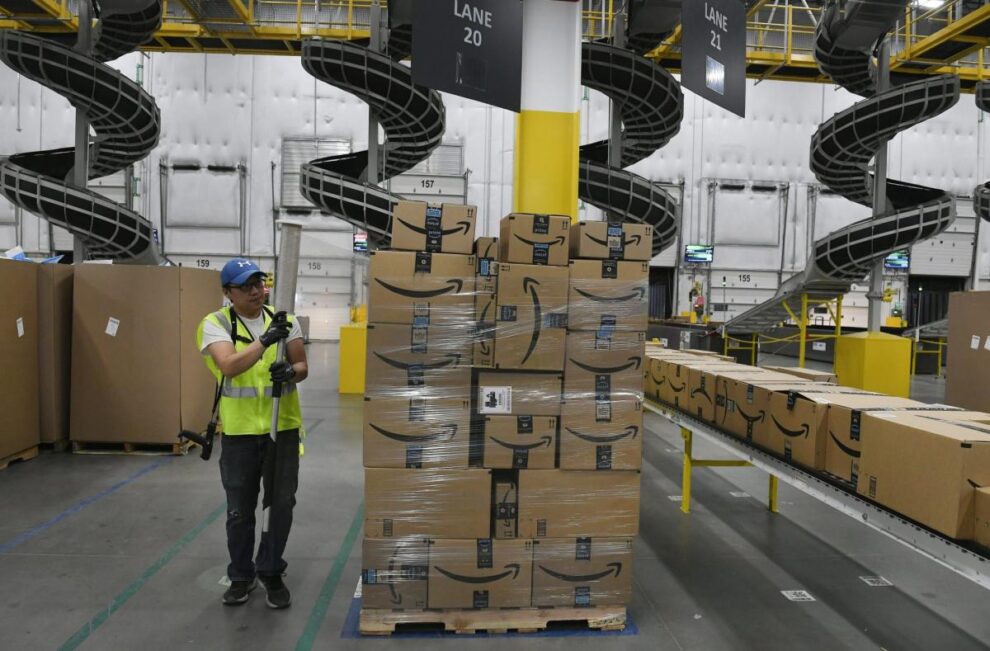
Amazon angered many longtime sellers earlier this year by tacking on two new fees that merchants said complicated their business operations, even for the most sophisticated of them. The furor was so extreme that the Federal Trade Commission contacted sellers about the fees amid the agency’s antitrust suit against the tech giant.
But on Thursday, Amazon announced the elimination of another fee ahead of the holiday shopping season that impacted hundreds of thousands of U.S. sellers. The so-called “overage” fee penalized sellers whose inventory in Amazon warehouses exceeded the limit set by the company, either because customer demand had slowed or for other reasons.
“The fee removal is in part due to Amazon’s more effective capacity management features, and we are glad to be able to eliminate these fees and allow sellers to not worry about them as we head into peak,” Amazon vice president Dharmesh Mehta wrote on LinkedIn, alluding to the busy holiday shopping season. “We hope this will help more sellers ensure they have enough inventory ready for peak demand this holiday shopping season.”
An Amazon spokesperson said the company will still set inventory capacity limits for sellers, but they will no longer be charged extra if sales are slow and their in-stock inventory exceeds their threshold. However, sellers will be unable to add to their inventory if their in-stock inventory plus in-transit restocks surpass their limit. The fee cancellation will be retroactive to July 1.
The holiday season will be crucial for Amazon and its sellers, who account for around 60% of total goods sold on the shopping platform and whose fees contributed $140 billion of revenue to the tech giant in 2023—or nearly a quarter of its total net sales.
Amazon’s stock price dropped more than 10% over the past week after its third-quarter sales forecast fell below analyst estimates. Amazon’s chief financial officer blamed the shortfall on consumers being distracted from shopping by a busy news cycle and warned that shoppers are cautious about spending and are therefore buying less-expensive brands when possible.
In recent years, Amazon’s rising seller fees have caused widespread angst among merchants using its platform, with outrage reaching a crescendo following the addition of two new U.S. fees earlier this year. One new fee penalized sellers who had too little inventory in stock. Another, known as the “inbound placement” fee, penalized sellers who didn’t ship their inventory to at least four different Amazon warehouses. Previously, sellers could ship inventory to one Amazon facility and the tech giant would then foot the bill of transferring it between warehouses in its network.
Last week, during an earnings call, Amazon CEO Andy Jassy referred to the new fee as “the incentive we’ve given sellers to send their items to multiple Amazon inbound facilities so they can save money.” He said the resulting seller behavior of shipping inventory to more Amazon warehouses to avoid the fee is “getting more traction than we’d even hoped.”
On LinkedIn, one Amazon seller responded to a post about Jassy’s comments with an image of a carrot and a stick, signaling a belief that the fee creates more of a reward and punishment dynamic than a mere incentive.
“A refresher may be in order ahead of the next earnings call,” the seller quipped with a winking emoji, alluding to a difference of opinion with Jassy’s definition.
This story was originally featured on Fortune.com








